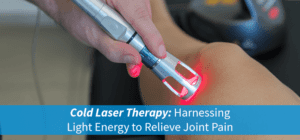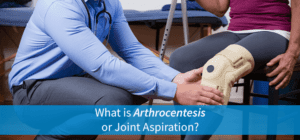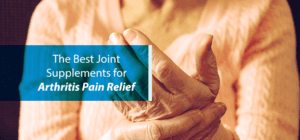
Cold Laser Therapy: Harnessing Light Energy to Relieve Joint Pain
Cold laser therapy (CLT), also known as photobiomodulation therapy or low-level laser therapy (LLLT), uses wavelengths of light to treat a variety of ailments. These wavelengths interact with the affected tissues in order to achieve accelerated healing. Doctors may use this treatment for patients who suffer from either chronic or acute conditions. The ultimate goal of Cold Laser Therapy is to alleviate symptoms, such as pain, swelling, and spasms. Through this symptom alleviation, many patients find a return to greater functionality in the target area. CLT has actually been around for quite some time now. Initially, Albert Einstein discovered the theory of light amplification through stimulated emission of radiation (LASER) in the early 1900s. Fifty-one years later, Professor Andre Mester started using low-power lasers to treat his patients. This was the first notable use of such a treatment in the field of medicine. The FDA categorizes medical lasers into three groups. The most powerful are class 4 surgical lasers, which doctors use to cut through tissue. This is the only “painful” type of medical laser. The next laser category is class 3B non-surgical lasers, which do not cause pain or burning sensations. This laser class, however, is able to reach deeper areas, which allows it to address problems with joints and deep tissues. Lastly, are class 3A lasers, which doctors use to heal minor injuries and conditions. This laser is the weakest of the three. What Does Cold Laser Therapy (CLT) Treat? CLT is versatile, as it works on all cell types (such as muscle, ligament, cartilage, nerves, and so on). Because of this fact, there are many conditions that exist where CLT is a viable treatment. Here is an overview of common conditions that CLT treats: Arthritis: At its most basic form, arthritis is the inflammation of one or more joints in the body. The problem may be a result of cartilage degeneration from everyday wear and tear, or it may be because of an autoimmune disease (such as rheumatoid arthritis). The condition exists in many forms. General arthritis symptoms include pain, stiffness, and swelling. Arthritis of the knee is the most common, as it is a load-bearing joint. Fibromyalgia Pain: A common, yet complex, chronic pain disorder that causes pain and tenderness throughout the body. Fibromyalgia is not very well understood, and symptoms vary in intensity from case to case. There are often mental health symptoms associated with this condition, such as depression and difficulty concentrating. Tendonitis: Tendonitis is the inflammation of the tendons–the cord-like glue that holds bones and muscles together. Most commonly, this injury is the result of minor, repetitive impacts in the same area over a period of time. Carpal Tunnel Syndrome: Carpal tunnel syndrome compresses the primary nerves in the hand as they pass through the wrist. Usually, this condition causes pain, numbness, and tingling in both the hand and arm. Most of the time, this condition worsens without treatment. Thankfully, CLT is known to give carpal tunnel relief. CLT also treats more general



